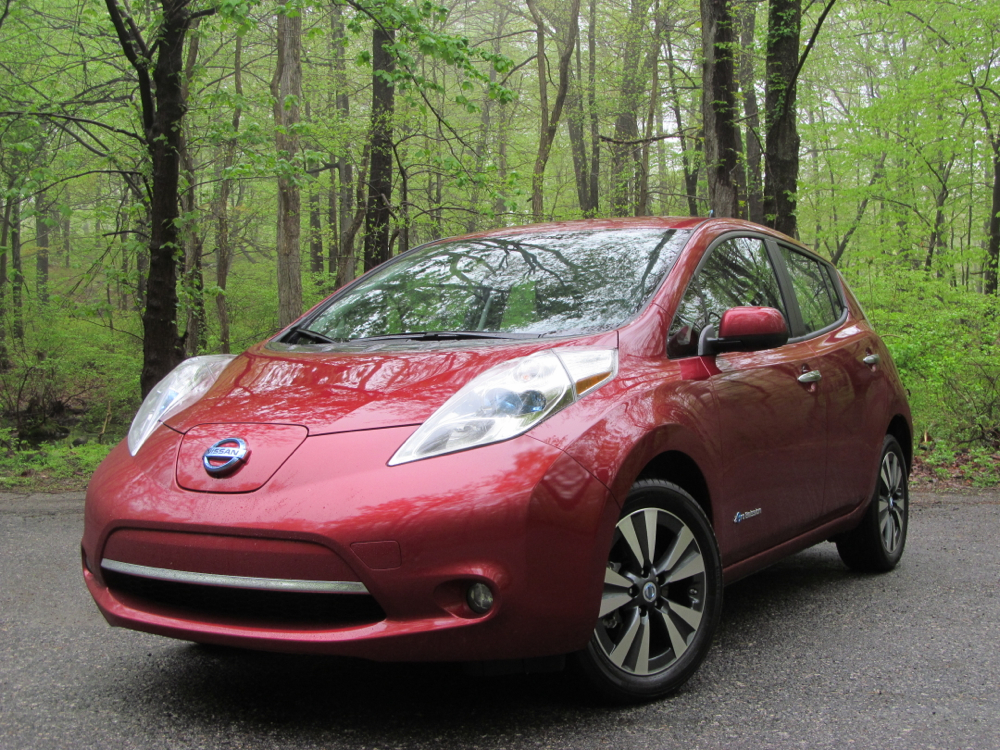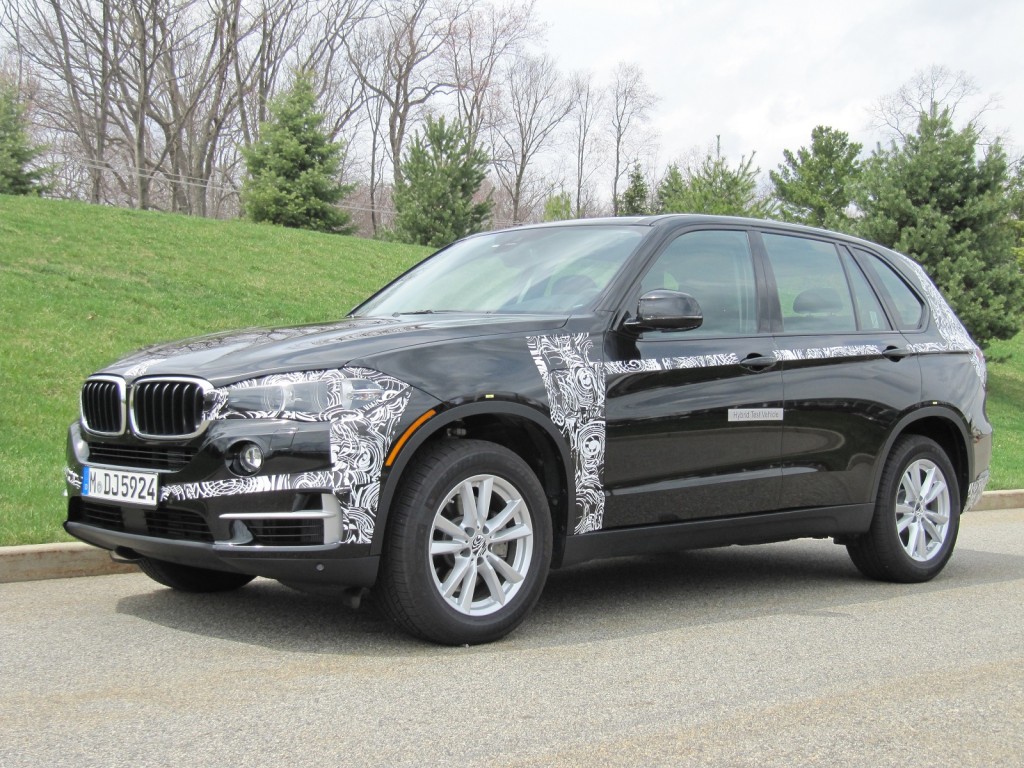Plug-in hybrids will clearly be all the rage among carmakers for the next couple of years.
While the number of high-volume battery-electric vehicles today can be counted on one hand--BMW i3, Nissan Leaf, Tesla Model S--virtually every global automaker now has plug-in hybrids planned for launch between 2015 and 2020.

2014 Nissan Leaf, Bear Mountain, May 2014
And, contrary to earlier reports, Nissan will be among those makers.
DON'T MISS: Nissan Leaf Likely To Offer Larger Battery For Longer Range
When Green Car Reports interviewed Carla Bailo, Nissan's now-departed senior vice president for research and development in the Americas, at January's Detroit Auto Show, she said that plug-in hybrids weren't on the agenda.
Hybrids, yes, and diesel vehicles in those markets where they take a significant market share--for which read Europe--but not plug-in hybrids.
Three months later, Andy Palmer, the company's head of global product development, refuted Bailo's statement in a wide-ranging interview with Green Car Reports during April's New York Auto Show.

2015 Volvo V60 Plug-In Hybrid R-Design
Palmer had said, both in October 2011 and May 2013, that Nissan would offer plug-in hybrids along with, at some point, hydrogen fuel-cell vehicles. (The company has a joint development agreement with Ford and Mercedes-Benz to cooperate on fuel-cell research and development efforts.)
In April, he added some further details. The start of plug-in hybrid production remains slated for late 2015, presumably coming to market in one or more model-year 2016 vehicles.
While Palmer declined to comment on specific models or vehicle types, he noted that Nissan sees a "natural dividing line" between battery-electric and plug-in hybrid powertrains, based on vehicle weight.
ALSO SEE: New 2017 Nissan Leaf: More Details On New Styling, Range--And Infiniti Electric Too
Batteries are suitable to power vehicles weighing 1,750 kg (3,850 lbs) or less, he said. Above that weight, plug-in hybrids simply make more sense on a cost and capability basis.

2014 Infiniti Q50 Hybrid Sport
In effect, that means that Nissan's electric vehicles are likely to remain in the compact to mid-size passenger car segment, or smaller--along with more specialized vehicles like the Nissan e-NV200 electric delivery van that just entered production in Spain.
Plug-in hybrids, on the other hand, could be used in mid-size or larger crossover utility vehicles, larger sedans, and luxury vehicles from Infiniti.
The last may be particularly important as Infiniti CEO Johan de Nysschen works toward a renewed Infiniti product line that can go head-to-head with the three German luxury brands, all of which will add one or more plug-in hybrids to their lineups within the next two years (as will Mitsubishi, Volvo, and others).
MORE: Three Mercedes Plug-In Hybrids On Sale By End Of 2015: S-Class, C-Class, ML-Class

BMW X5 e-Drive plug-in hybrid prototype, test drive, Woodcliff Lake, NJ, April 2014
As for technology, Palmer said a Nissan plug-in hybrid system would not be derived from either of its two current hybrid powertrains--one a full hybrid for larger rear-wheel-drive vehicles, the other a mild-hybrid system for front-wheel-drive platforms.
Instead, it would be a new and separately engineered system that might, for instance, use a 80-kilowatt (108-horsepower) Nissan Leaf electric motor--giving Nissan significant economies of scale after building a few hundred thousand Leafs. (The total as of last month is 115,000.)
That motor could be paired with a gasoline engine, presumably downsized, and a smaller battery derived from the Leaf's current 24-kilowatt-hour lithium-ion pack.
Assuming its plug-in hybrids come to market as scheduled 18 months from now, they will reinforce Nissan's preeminent position as the global automaker most committed to electrifying large segments of its lineup by 2020.
It promises to be a fascinating few years.
_______________________________________________













